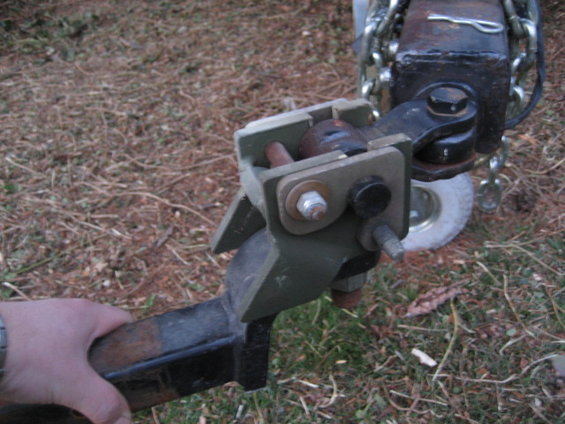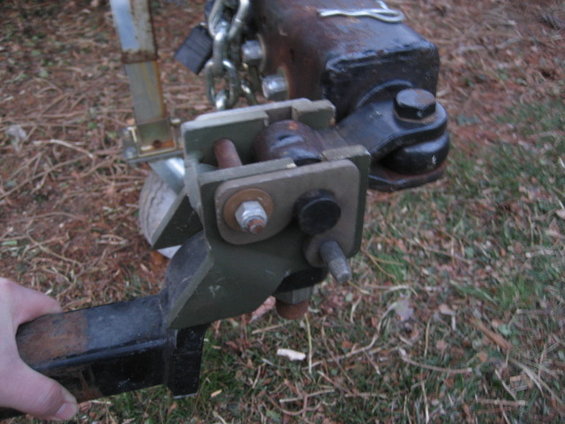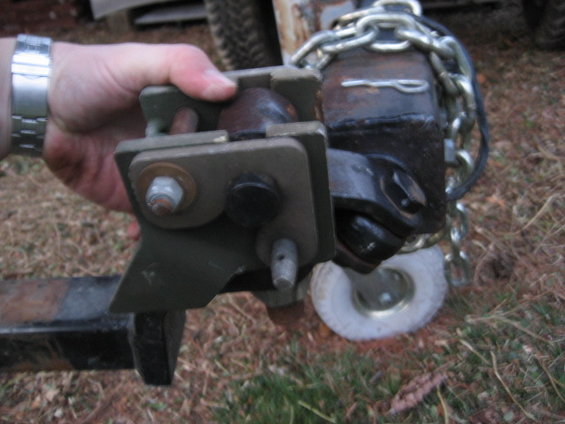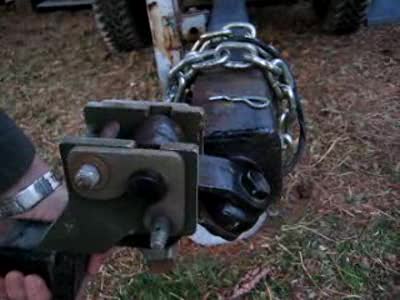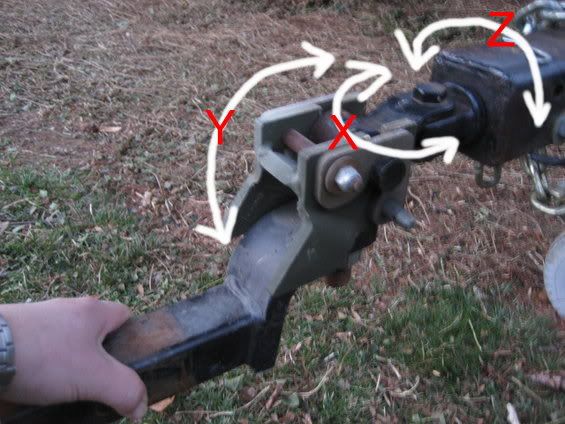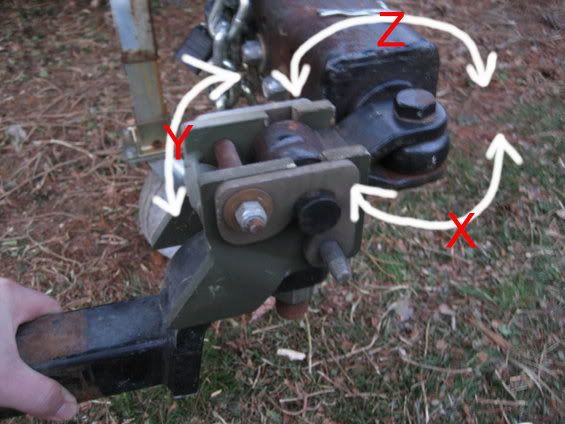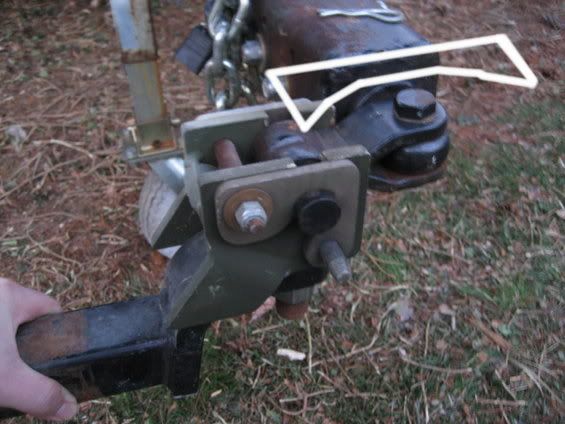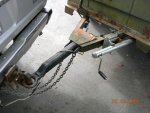I am new here, but have noticed this thread as I am looking to get away from my standard ball coupler and go with a good offroad hitch. My friend has a lock-n-roll hitch and so far has had no problems. I will do my best to speak intelegently about this design.
While I do see the issue with jack knifing the trailer and the problem that it poses I have another scenario that might case the same problem with bending the hitch.
I will try to explain this the best I can so please try to follow me.
In the first photo I have shown the 3 axis that the hitch has, the second with the same axis just in different angle so maybe my explination doesn't loose anyone. The X axis allows the trailer to turn behind the vehicle, the Y axis allows the trailer to move up and down (as in going up and down a hill in a straight line), and the Z axis allows to trailer to tilt side to side independantly from the vehicle (or in striaght axle terms - Get all twisted up to the rig).
The problem I see other than just jack knifing the trailer and the hitch "collapsing" along the Y axis due to the play in the Z axis as it hits close to the 90* angle, If you are backing the trailer up (jack knifing the trailer) even before you get to 90 you could have issues if the trailer is going uphill as it turns behind the vehicle. Forcing the trailer to pivot on the A axis shown below, thus twisting/bending the hitch.
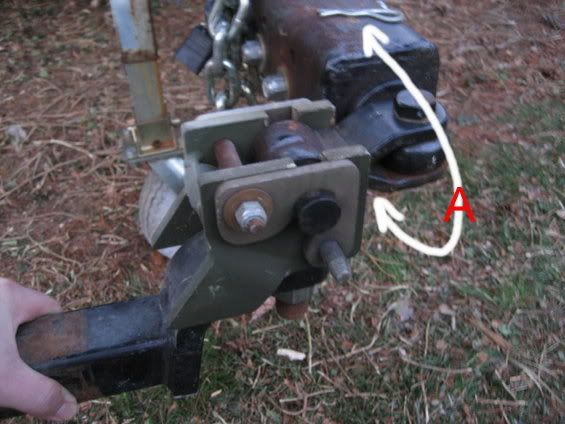
If the hitch were completely turned backwards and upside down it would solve that issue because the trailer would be allowed to pivot on the Y axis independent from the vehicle. However this does not solve the problem at a full 90* turn. I believe the hitch would still rotate on the Z axis and need to be lifted to unbind. I have an idea to solve the problem but would require some welding, but a plate welded with a moon shape cut in it to allow the hitch to still rotate on the Z axis to the hitch as shown below would keep the hitch from settling down once it hits the angle that allows the hitch to bind.
I will more than likely be buying one of these in the next week, So I will definitely do my modifications to the hitch to see if it works and report back.



